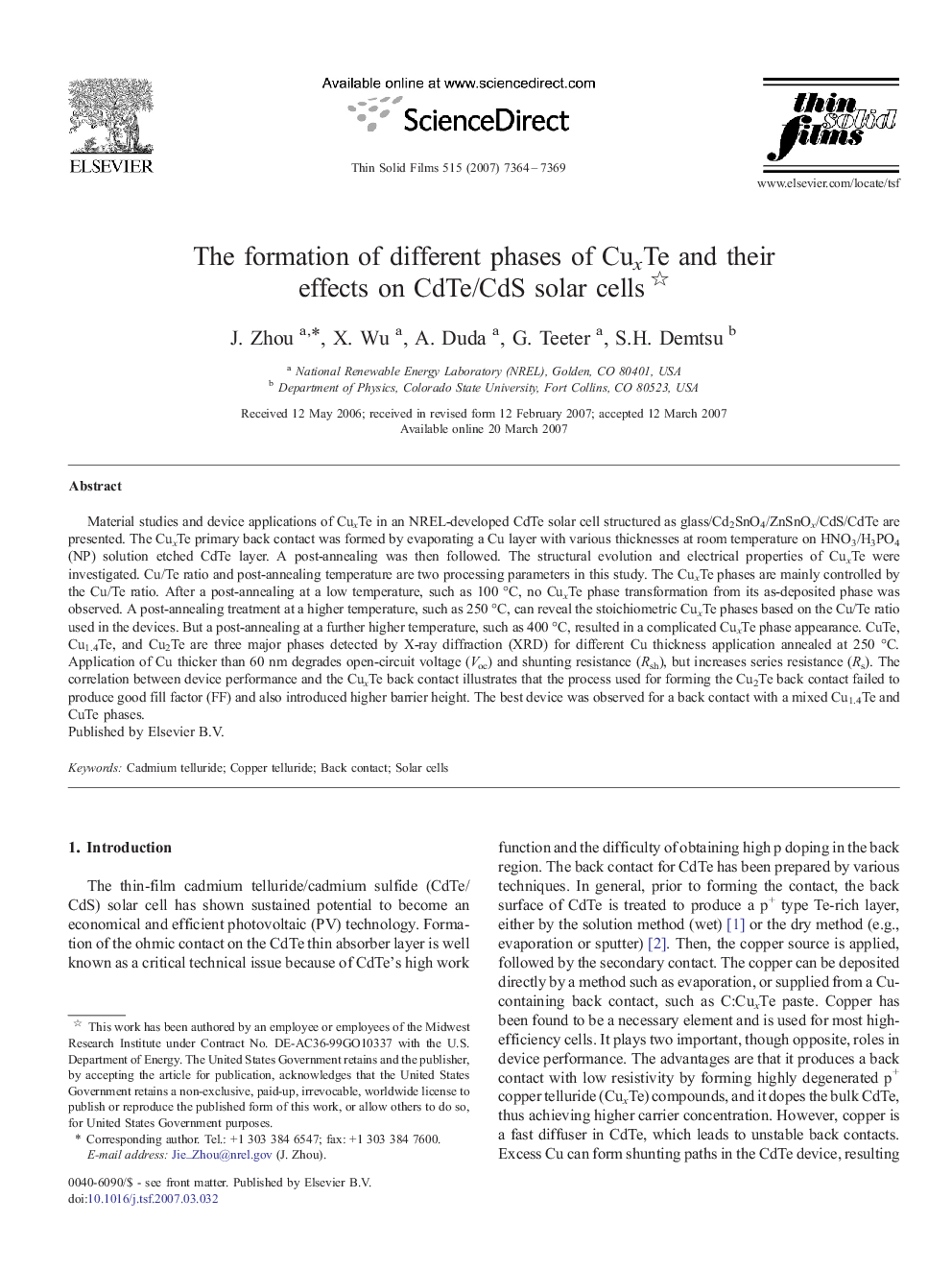| Article ID | Journal | Published Year | Pages | File Type |
|---|---|---|---|---|
| 1674794 | Thin Solid Films | 2007 | 6 Pages |
Material studies and device applications of CuxTe in an NREL-developed CdTe solar cell structured as glass/Cd2SnO4/ZnSnOx/CdS/CdTe are presented. The CuxTe primary back contact was formed by evaporating a Cu layer with various thicknesses at room temperature on HNO3/H3PO4 (NP) solution etched CdTe layer. A post-annealing was then followed. The structural evolution and electrical properties of CuxTe were investigated. Cu/Te ratio and post-annealing temperature are two processing parameters in this study. The CuxTe phases are mainly controlled by the Cu/Te ratio. After a post-annealing at a low temperature, such as 100 °C, no CuxTe phase transformation from its as-deposited phase was observed. A post-annealing treatment at a higher temperature, such as 250 °C, can reveal the stoichiometric CuxTe phases based on the Cu/Te ratio used in the devices. But a post-annealing at a further higher temperature, such as 400 °C, resulted in a complicated CuxTe phase appearance. CuTe, Cu1.4Te, and Cu2Te are three major phases detected by X-ray diffraction (XRD) for different Cu thickness application annealed at 250 °C. Application of Cu thicker than 60 nm degrades open-circuit voltage (Voc) and shunting resistance (Rsh), but increases series resistance (Rs). The correlation between device performance and the CuxTe back contact illustrates that the process used for forming the Cu2Te back contact failed to produce good fill factor (FF) and also introduced higher barrier height. The best device was observed for a back contact with a mixed Cu1.4Te and CuTe phases.
